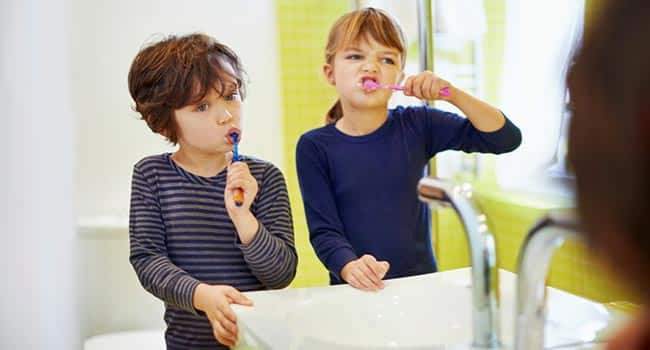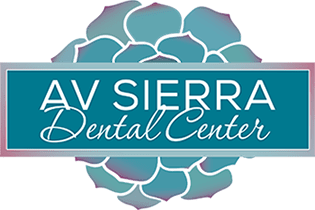Teaching Kids to Care for Their Teeth

How to Teach Kids to Care for Their Teeth (and a Little about Why and When, Too) If you’re a parent, you’ve probably tried every type of motivation—reasoning, cajoling, nagging, threatening punishments, even bribery—to get your kids to do things that they just really need to do. Eating vegetables. Getting dressed for school. Going to bed. And yes, brushing their teeth. Oral Hygiene Is Important Good oral hygiene is about more than a winning smile. It contributes to our sense of self-esteem and confidence—and what parent doesn’t want a child who’s happy, confident, and proud of him or herself? What you might not know is that oral health contributes greatly to your—and your child’s—long-term holistic health. Poor oral health is linked to diseases including obesity, diabetes, and even heart disease. Encouraging your children to take care of their teeth sets them up for a lifetime of good oral health—and good health in general. Start early—but focus on the big picture One way to make sure children take oral hygiene seriously is by starting early. Wipe their gums with a soft washcloth after bottle feedings, and once their baby teeth come in, brush them twice a day with a soft toothbrush and water. Toddlers aged two to four can begin brushing by themselves, preferably for two minutes, but don’t use fluoride toothpaste until your child knows not to swallow it. Start flossing your children’s teeth around the same time, as their teeth start to fit closely together. If you haven’t already brought them in for a first dentist’s visit, now is the time to start as well. Children don’t have the coordination to do as thorough a job as adults. They may not even be able to use dental floss until they’re 10 or so.; (Floss picks are easier for young kids.). But the key is to begin building good oral hygiene habits early on in life. Make sure your children understand the basics: Brush twice a day. Floss every day. Avoid sugary foods and drinks. Visit a dentist regularly for checkups. Set a good example. “Do what I say, not what I do.” There’s always a temptation to tell others—kids, especially—to behave a certain way, even if we don’t always do so ourselves. Be kind to strangers. Share. Be generous. But children learn more by watching their parents and friends every day. If you take good care of your teeth, they’ll learn implicitly that oral hygiene is important and worth practicing. It’s understandable that bathroom routines are “private time,” but don’t be shy about brushing or flossing in front of little ones. They’ll pick up good habits that way. Make it fun! What parent hasn’t turned a boring or unpleasant chore into some sort of a game in order to convince a child to participate? The answer: zero. And that’s a fact. Here are some simple ways you can turn oral hygiene into something more fun for kids: Let Them Pick Their Toothbrush Kids often feel like they don’t have choices—so let them pick out a toothbrush with their favorite character on it or a toothpaste flavor they like. There are so many cute character-themed toothbrushes on the market that it should be easy to find a fun toothbrush to help make brushing enjoyable. Having a fun brush will help kids be more invested in brushing their teeth. You may even find a character-themed toothbrush you like for yourself. Play Creative Dental Games Turn brushing their teeth into something fun instead of a nightly chore. Encourage them to brush their stuffed toys’ teeth while telling them how important it is to brush and floss. Colgate has several dental game ideas that teach kids the importance of caring for their teeth and gums. Read Books About Teeth, Cleaning Teeth and Visiting the Dentist Many kids love bedtime stories. Use this fun activity to help prepare them to visit the dentist by reading them a story about dental care. Reward Them When you child does a good job brushing and flossing give them a reward. Candy may not be the best option here but perhaps you can give them a quarter or let them pick the 2nd book to read at bedtime. Perhaps a dental book? Remember, we’re here to help. Day-to-day hygiene routines are the foundation of lifelong oral health, so there’s no substitute for the time you spend with your children, teaching them the fundamentals of brushing and flossing. But at AV Sierra Dental Center, we’re here to help. When you bring your child in for a visit, let us know if you have any concerns or issues you’d like to discuss. We want to make sure that your kids have a positive, friendly, age-appropriate dental experience each and every time they come to our office.
What is The Best Dental Routine

You hear advice everywhere you go. Brush and floss daily. Use mouthwash to fight bad breath. One out of every four dentist recommends using a Waterpik. Dental health is very important, and as a consumer, there are a ton of options to pick from. To help make your dental hygiene routine easier, we’re going to cut through the noise with some simple suggestions about what a good routine looks like and what products you should consider using. The Basics We’ve mentioned this before—and so did your mom—you need to brush and floss daily. (In this case, she’s right.) However, you might not realize that to brush most effectively, timing matters! You should always brush your teeth before you eat breakfast. As you sleep, your salivary glands don’t produce as much saliva, enabling bacteria to grow and thrive. If you eat before brushing, more acid will be produced because of the overnight bacterial growth. Not everyone can fit brushing in first thing every morning. If you do decide to brush afterwards, try to wait at least 30 to 60 minutes, especially if you consume foods that contain citric acid (foods like orange juice, grapefruit, lemons, etc.). The citric acid weakens your enamel and brushing your teeth afterwards can be more damaging than beneficial. You only need to floss once a day. It doesn’t matter what time you floss, as long as you are doing it. If flossing requires too much dexterity, or you simply don’t like it, there are other options—but we’re not saying to give it up. If you can’t or just won’t floss, try alternatives like interdental brushes or floss picks. Go Above and Beyond Once you’ve mastered the basics of brushing and flossing, there are additional things you can do to make sure you have a clean, healthy mouth. Number one: mouthwash. Swish a little around your mouth and you instantly feel refreshed. But mouthwash can be more than just a mid-day pick-me-up, and different types of mouthwash have different benefits. Fluoride: This mouthwash provides an additional source of fluoride. If you use toothpaste and drink tap water containing fluoride, you probably get enough. However, your dentist may suggest using fluoride mouthwash if they see some troubled spots. Antiseptic: More commonly used, antiseptic mouthwash (like Listerine) kills bacteria. This will help with bad breath and the prevention of gingivitis. Another tool you can use is the Waterpik. The Waterpik shoots a small, high powered stream of water that you can use along your gumline and in between your teeth. It can be useful if you have pockets or wider gaps between your teeth. While the Waterpik is a great tool, it still isn’t a substitute for flossing. Note: If you have braces or other fixed items in your mouth, the Waterpik is especially valuable. Braces and fixed items can trap food next to your teeth for hours after eating, giving the bacteria in plaque a feast. After eating, use the Waterpik to clean out food that is stuck in your mouth. The Waterpik is also a great option for those who need to brush but may have just had citric acid in their meal. Since the dental market is enormous, new products and methods will always be emerging. Always do proper research before buying an item or switching your routine. A good rule of thumb to follow is to see if the product is endorsed by the American Dental Association. Remember, the best routine is the one you’re able to follow consistently. Routines will always be different depending on the person, so please don’t hesitate to reach out to AV Sierra Dental Center for more information on a routine that works for you.
